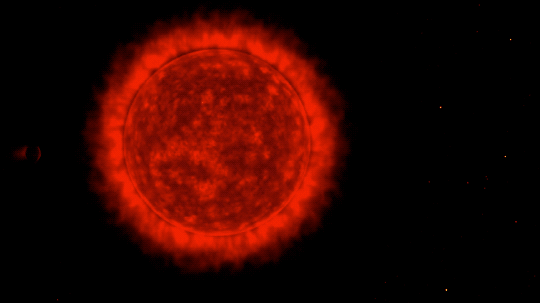Exploring the Red Sky Paradox: Why Isn't Our Sky Red?
Written on
Chapter 1: Understanding the Red Sky Paradox
The phenomenon known as the "red sky paradox" raises an intriguing question: why do we not observe a red sky above us? Despite the predominance of red dwarfs in our galaxy, life has developed near a yellow sun instead. This peculiarity prompts scientists to investigate the conditions necessary for life.

Our Sun is projected to deplete its hydrogen reserves in approximately four billion years, subsequently transitioning to helium burning. This will lead to its expansion into a red giant, potentially engulfing Mercury, Venus, and possibly Earth. If civilization still exists by then, it will likely be obliterated long before that.
Over time, the Sun’s luminosity has increased. In about one billion years, Earth will experience temperatures so extreme that the oceans will evaporate. Any civilization existing on a planet orbiting a solar-type star, like our Sun, would face a similar fate.
Fortunately, there are stars where life could thrive for much longer: the red dwarfs. These stars are significantly smaller than our Sun, and numerous planets have been identified orbiting them. Among these, the TRAPPIST-1 system stands out, featuring seven closely grouped planets that orbit in nearly perfect harmony.

Red dwarfs are remarkably long-lived, with their hydrogen-burning processes occurring at an exceptionally slow rate. Astrophysicists estimate that these stars can exist for trillions of years without showing signs of aging. Despite their prevalence—comprising up to 85% of all stars in our galaxy—life on Earth arose around a G-type star, leading astronomer David Kipping from Columbia University to ponder the reasons behind this occurrence.
Section 1.1: The Enigma of Life's Origin
Kipping's inquiries into the red sky paradox question the likelihood of life developing around such common stars. He suggests that understanding why our sky is not red could yield significant insights into the search for extraterrestrial life. His research, published in the journal PNAS, presents four potential explanations for this enigma.
Subsection 1.1.1: The Role of Chance
One possible resolution to the red sky paradox is that life's emergence relies heavily on fortunate coincidences. The conditions that allowed life to form on Earth, orbiting a yellow dwarf, may simply be a matter of chance, implying that the type of star may not be as critical as previously assumed.

A second hypothesis posits that red skies may not be conducive to life. Given that red dwarfs are relatively cool and dim, any planet orbiting such a star would need to be very close to maintain habitable conditions. However, this proximity exposes planets to the volatile nature of red dwarfs, which are known for their frequent flares—potentially detrimental to life.
Section 1.2: The Longevity of Red Dwarfs
Research indicates that red dwarfs are indeed turbulent, but they may eject flares primarily from their poles, potentially shielding their planets and any nascent life from harm.
Another possibility suggests that life around red dwarfs simply hasn't had enough time to develop. While red dwarfs enjoy lengthy lifespans, their gradual evolution means that conditions suitable for life may take much longer to stabilize.
Why Don't We Live Around a Red Dwarf? - This video delves into the reasons behind the absence of life around red dwarfs, exploring the conditions that might prevent life from flourishing in such environments.
Chapter 2: The Rarity of Earth-like Planets
A final explanation for the rarity of red skies involves the infrequency of rocky planets orbiting red dwarfs at the correct distance for liquid water to exist. It appears that only one in six planets found around these stars is rocky and positioned within the habitable zone, with most being gas giants.
RED SKY PARADOX: How to Solve It? - This video discusses various theories surrounding the red sky paradox and the implications for astrobiology and the search for extraterrestrial life.
Ultimately, Kipping suggests that multiple explanations may hold truth. Understanding the nuances of the red sky paradox is essential for astrobiology and the Search for Extraterrestrial Intelligence (SETI). By determining whether life is more likely to arise around red or yellow dwarfs, we can refine our search efforts to more promising regions of the cosmos.

This exploration of the red sky paradox emphasizes the complexities of life's origins and the factors influencing its development across the universe.